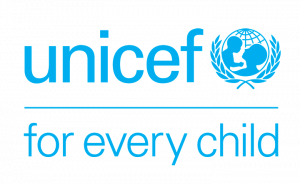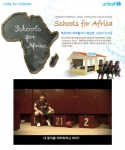GLOBAL MEASLES DEATHS PLUNGE BY 48% OVER PAST SIX YEARS
[Joint News Release WHO/UNICEF]
GLOBAL MEASLES DEATHS PLUNGE BY 48% OVER PAST SIX YEARS
Africa leads a dramatic decline in measles deaths
GENEVA/NEW YORK - An ambitious global immunization drive has cut measles deaths by nearly half between 1999 and 2004, the World Health Organization (WHO) and the United Nations Children's Fund (UNICEF) announced today.
Global deaths due to measles fell by 48 percent, from 871,000 deaths in 1999 to an estimated 454,000 in 2004, thanks to major national immunization campaigns and better access to routine childhood immunization, the agencies said. These figures are the latest available measles mortality figures calculated by WHO.
The largest reduction occurred in Africa, the region with the highest burden of the disease, where estimated measles cases and deaths decreased by 60 percent.
"This is an outstanding public health success story,” said Dr. LEE Jong-wook, WHO Director-General. “If progress continues at this rate, the global goal to cut measles deaths by half will likely be surpassed.”
Measles is one of the most contagious diseases known. Although a safe, effective and inexpensive vaccine has been available since the 1960s, an estimated 410,000 children under-five died from measles in 2004, often from complications related to severe diarrhoea and pneumonia. Many who survive are left with lifelong disabilities including blindness and brain damage. Weak immunization systems that are unable to deliver measles vaccine to young children remain the primary reason for countries still experiencing high measles deaths.
"Measles remains a major killer of children in the developing world, but it doesn't have to be," UNICEF Executive Director Ann M. Veneman said. "Just two doses of an inexpensive, safe, and available measles vaccine can prevent most, if not all, measles deaths."
WHO and UNICEF have concentrated measles reduction activities in 47 countries that account for about 98 percent of measles deaths, working primarily to improve routine immunization as well as to provide treatment to children with measles and strengthen disease surveillance. Supplementary immunization activities also have proven to be especially effective: from 1999 to 2004, nearly 500 million children were immunized against measles using a campaign model.
While African countries have made great improvements in reducing measles deaths, the progress in the South Asia region has been slow. The challenge now is to increase measles immunization coverage in the region to at least 90 percent, and ensure all children receive a first dose of measles at nine months of age through the routine immunization services and a second measles dose either through routine or supplementary immunization activities.
A key factor contributing to progress in reducing measles deaths has been the strong support of the Measles Initiative. Since 2001, the Initiative has supported vaccination efforts in over 40 African countries and raised more than US $150 million with help from partners such as the Global Alliance for Vaccines and Immunization. The Initiative will now expand its technical and financial support to South Asian countries, where measles deaths are highest outside sub-Saharan Africa. It will also continue the successful child health campaigns in which health workers provide not only measles vaccine but also polio vaccine, insecticide-treated nets for malaria prevention, vitamin A and de-worming tablets.
* * *
※ The Measles Initiative (www.measlesinitiative.org)
Launched in 2001, the Measles Initiative is a partnership formed to reduce and control measles deaths. The Initiative is spearheaded by the United Nations Foundation, American Red Cross, United States Centers for Disease Control and Prevention, UNICEF and WHO.
Other key partners include the Global Alliance for Vaccines and Immunization (GAVI Alliance), Bill & Melinda Gates Foundation, Canadian International Development Agency (CIDA), Japanese International Agency for Cooperation (JICA), United Kingdom Department for International Development (DFID), Norwegian Agency for Development Cooperation and the International Federation of Red Cross and Red Crescent Societies (IFRC).
Further information on measles can be found in the WHO Fact Sheet entitled Measles: http://www.who.int/mediacenter/factsheets/en/ or from:
※ The 47 priority countries are Afghanistan, Angola, Bangladesh, Benin, Burkina Faso, Burundi, Cambodia, Cameroon, Central African Republic, Chad, Congo, Côte d'Ivoire, Democratic Republic of the Congo, Djibouti, Equatorial Guinea, Eritrea, Ethiopia, Gabon, Ghana, Guinea, Guinea-Bissau, India, Indonesia, Kenya, Lao People's Republic, Liberia, Madagascar, Mali, Mozambique, Myanmar, Nepal, Niger, Nigeria, Pakistan, Papua New Guinea, Rwanda, Senegal, Sierra Leone, Somalia, Sudan, Timor-Leste, Togo, Uganda, United Republic of Tanzania, Viet Nam, Yemen and Zambia.
유니세프한국위원회 개요
유니세프한국위원회는 한국에서 유니세프를 대표하는 기관(비영리법인)으로서 한국위원회의 주된 임무는 세계 어린이를 위해 국내에서 세계 어린이 현황과 유니세프 활동을 널리 알려 어린이돕기 기금을 조성하는 것입니다. 또한, 아동의 권리 홍보 및 모유수유 권장, 세계교육 등의 사업을 통해 어린이 권리를 신장하는 활동도 함께 펼쳐 나갑니다. 유니세프한국위원회가 국내에서 펼치는 모든 활동은 유니세프가 전세계적으로 펼치고 있는 어린이 구호활동을 지지하기 위한 것입니다.
웹사이트: http://www.unicef.or.kr
연락처
유니세프한국위원회, 김재명 대리, 02-735-2315, 018-241-2098, 이메일 보내기



![방탄소년단의 글로벌 팬미팅 BTS 5TH MUSTER [MAGIC SHOP]에서 진행된 유니세프 부스 방탄소년단의 글로벌 팬미팅 BTS 5TH MUSTER [MAGIC SHOP]에서 진행된 유니세프 부스](https://file.newswire.co.kr/data/datafile2/thumb/2019/10/3554238800_20191024170202_4476783960.jpg)
